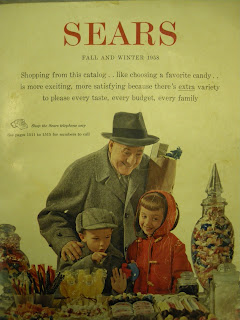By Bobby Waddle
Feature Writer
Jeremy Wallach’s office is adorned with music posters, tapes, CDs, movies and dinosaur action figures that immediately reveal his interests.
Wallach is an associate professor in the Department of Popular Culture, researching southeast Asian popular music, as well as cultural theory and globalization. He said that popular culture study is moving in an international direction, focusing on topics such as Bollywood film, Japanese animation and heavy metal bands from Northern Europe, Japan and Latin America.
“Historically, popular culture studies have been all about America,” Wallach said. “The sense is that popular culture is about old mystery dime store novels, about Hollywood cinema and about ‘60s rock and roll.”
Popular culture classes are largely concerned with studying trends to see how they reflect the thinking of society at a specific point in time, incorporating theories like gender, race and class. Wallach said that while many of the classes may seem trivial, they offer a chance to teach complicated social concepts using source material that is familiar, enjoyable and relatable to students.
BGSU is the only university to offer bachelor’s and master’s degrees in popular culture, and it has a global influence on how other schools teach culture. Instructor Charles Coletta said that Ray Browne’s 1973 foundation of the department opened the door for a broader range of topics to be studied.
“When Dr. Browne started this whole thing, you would never go to a college and [hear teachers] discussing comic books and superheroes,” Coletta said. “Now it’s everywhere, in every sort of academic institution.”
Wallach said that other universities offer similar master’s programs in media studies, anthropology and communications, but he said that Bowling Green offers the only bachelor’s and master’s program in popular culture because universities stopped making new departments in the 1970s in favor of new programs and study centers.
“We were the first department of popular culture, and it turns out we were the last,” Wallach said. “We’re the only one with a name.”
Because of the department’s distinction, Wallach enjoys the unique teaching opportunities the university offers because he is able to teach classes like “The Dinosaur in Popular Culture,” a course he designed last year.
“That’s not a class I could have taught anywhere else probably in the country,” Wallach said. “Even people who are published on the topic can’t actually teach a class on the subject at a university.”
While other universities incorporate the study of popular culture into their programs, Coletta said they tend to specialize in certain fields. Syracuse University specializes in television studies and Michigan State University focuses more on comic books.
“You can find popular culture things everywhere else, but it really does start here,” Coletta said.
The collection at the Browne Popular Culture Library reflects a comprehensive approach to the study. Nancy Down, head librarian at the Browne Popular Culture Library, said that other libraries tend to have a focus, such as Ohio State University’s library on cartoon research along with theatre and dance.
“Our vision was to be comprehensive and cover all areas of popular culture to some extent,” Down said.
Browne’s goal when he founded the department focused on getting a comprehensive look at everything that affects people’s lives on a daily basis.
“[Popular culture] is the everyday world around us: the mass media, entertainments and diversions,” Browne said in a 2002 interview with Americana: The Journal of American Popular Culture. “It is our heroes, icons, rituals, everyday actions, psychology and religion—our total life picture.”
Because of its scope, Wallach stressed the importance of being an educated consumer of popular culture.
“I would recommend that people take popular culture classes even if they are not relevant to their major,” Wallach said. “It’s important to know how and why popular culture products are made [and] the kinds of ideological messages they tend to be conveying.”
This is where studying semiotics comes in handy.
Susie O’Brien and Imre Szeman write in “Popular Culture: A User’s Guide” that semiotics examines “how the individual elements of language—signs—worked together to produce meaning.”
Coletta said semiotics is one of the most important angles to study in popular culture.
“Everything is open to interpretation, [from] the clothes you wear, the way that you cut your hair and the kind of car you drive,” Coletta said.
While critically acclaimed works of literature and film are studied in film and English departments, popular culture focuses on works that are not necessarily considered quality, but manage to strike a chord with society.
Down said Browne was “a visionary” for adopting this approach when he helped create the study.
“He didn’t have that distinction between high and low culture, and so almost anything for him was worthy of study,” Down said.
Simon Morgan-Russell, dean of the College of Arts and Sciences, said that studying popular culture is important because it focuses on current works of art along with past classics. He said that what is considered low culture now can be high culture later, using William Shakespeare’s plays as an example as they were not considered to be high art in their time period.
“We don’t have to apologize for studying situation comedy … because in a real sense, situation comedy reaches more people these days than Shakespeare does,” Morgan-Russell said. “I think it’s important to study these forms that represent who we are at this moment.”




